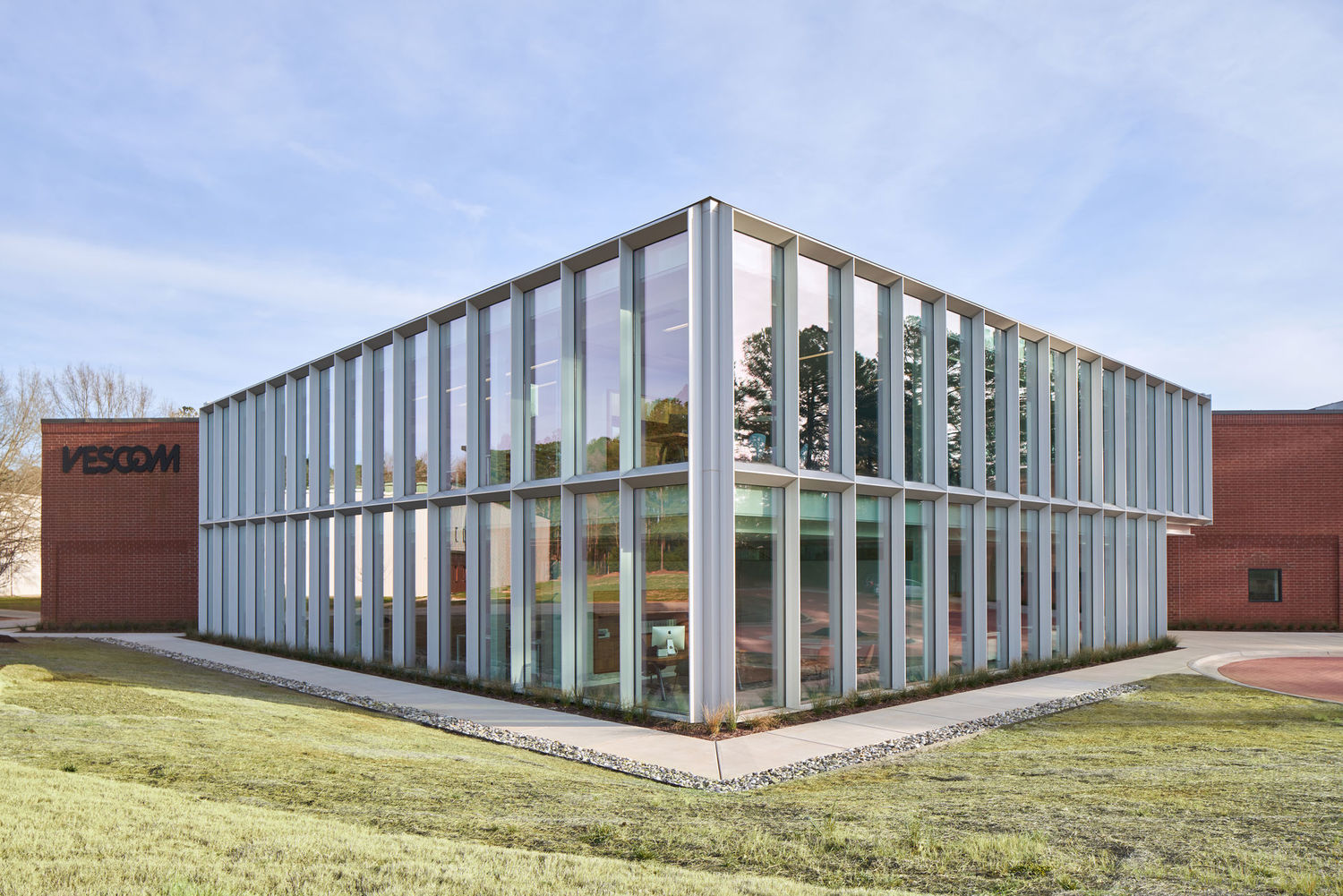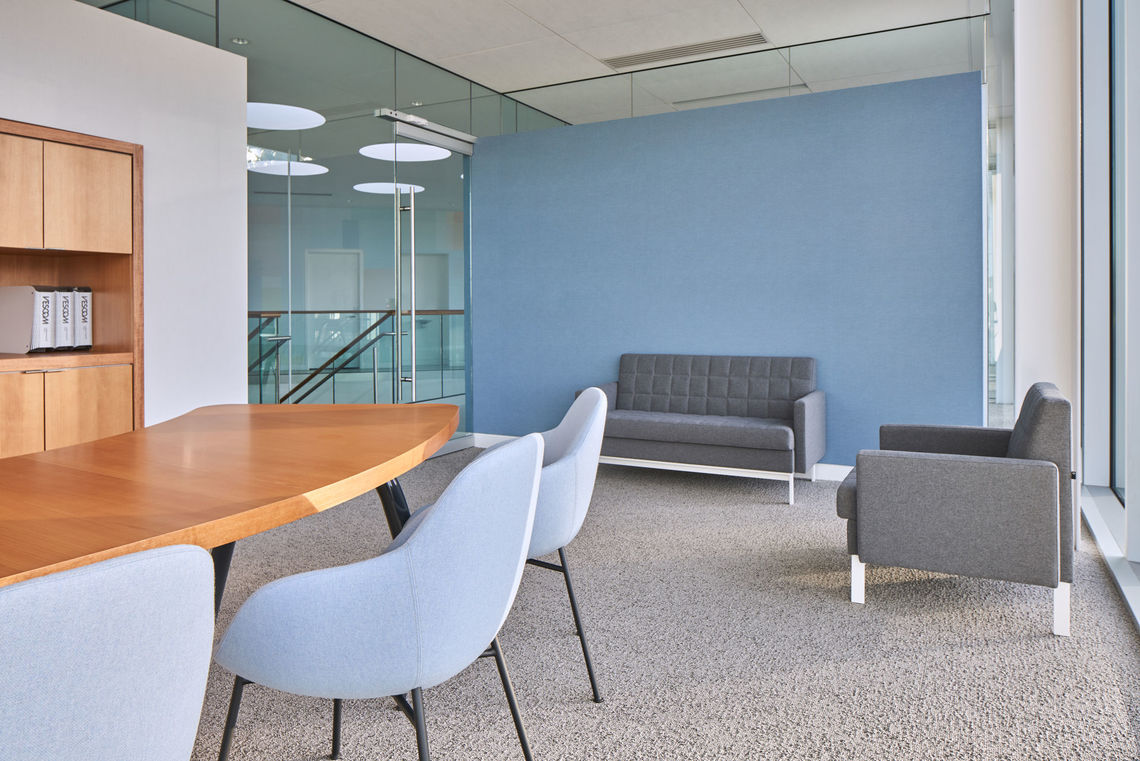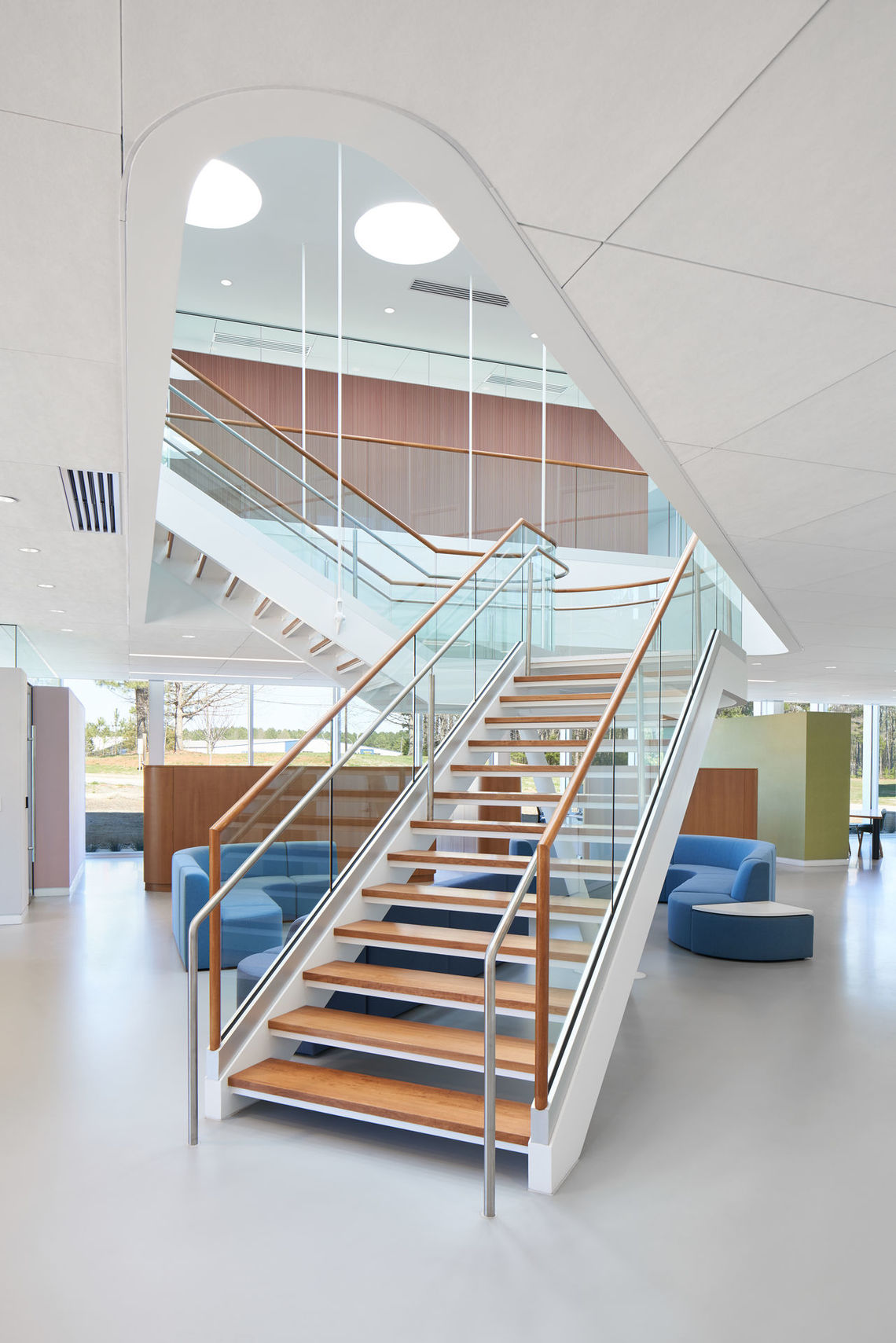Vescom America’s rapid expansion meant the company’s HQ in Henderson, North Carolina, needed to follow suit. Extra space was needed for the latest equipment, including state-of-the-art technologies that make the manufacture of over 400 wallcovering products and upholstery patterns more efficient and environmentally friendly.

The options were to either build a new warehouse, or to repurpose the existing office space for machinery and to construct an additional working environment for administrative staff. Vescom’s CEO Philippe van Esch opted for the latter. ‘We could have erected a simple square office in front of the original building,’ says Joe Berasi, President of Vescom America, ‘but Philippe wanted it to be so much more than that. If the building is going to bear the Vescom name, he said, it needs to be a piece of modern architecture that reflects our core values and beliefs, as well as our design-oriented products. And it should feel like Vescom’s network of offices all around the world.’
Berasi was tasked with finding a suitable architect for the project. ‘We got extremely lucky,’ he says. ‘We’re a Dutch company, and one of the most famous Dutch architects is Rem Koolhaas. It just so happened that Patrick Hobgood, who worked for Koolhaas’s architectural office OMA in New York for nearly ten years, was returning to the area to take over his father’s architectural business. Here was a local architect who understood Dutch and European design, and who had worked on projects all over the globe.’

Since Vescom is in the contract furnishings business, the brand is synonymous with high design and functionality: two qualities the new working environment should also possess. Attached like a barnacle to the existing building, the new mass functions both independently and as an entry point to the factory. The structure is situated in a ravine, making a two-storey extension ideal for offering views beyond the roadway. From the architects’ string of massing studies, Van Esch selected a triangle shape: a perfect square sliced straight through the middle. ‘We’d never done a triangular project,’ says Patrick Hobgood. ‘We liked that the shape subtly references the “V” for Vescom. We tried to highlight the geometry of the architecture wherever we could.’ Hobgood says the project is one of the most efficient buildings the firm has produced to date: ‘It basically has just two elevations.’ Choosing a simple base structure afforded the chance to push things with the façade. The result is a custom 8,000-sq-ft (743.22-m2) glass curtain wall – unique to the southern US – that continues the triangular motif.
Approaching drivers will see the glass triangle emerge from the landscape like an oasis in the desert. The building’s new jewel-like addition acts as a ‘storefront or trophy case’, says Hobgood. ‘The idea was to use as many Vescom products as possible inside. We wanted to give visitors an immediate sense of the brand’s portfolio when they enter.’ In other words, the building is more than just a workplace; it’s also a branding tool. The majority of the furniture and interior surfaces feature Vescom >upholstery fabrics and wallcovering, with palettes – which can be updated to represent the latest releases – chosen by Vescom Design Director Christiane Müller. ‘Christiane’s direction really enhanced the design,’ says Hobgood. ‘Without her, the interior would have almost certainly been white on white. Now there’s so much vibrancy and warmth. Most architects won’t admit it, but we’re not great colourists. Christiane has such an eye for these things.’
Vescom America’s VP of Design Development, Leigh Hawkins, occupies the coveted corner office – a sign of Vescom’s design-driven mentality. The Design Studio was the first room to be conceptualized; the other offices were designed around it. ‘The studio’s floor-to-ceiling windows provide optimal lighting for design and colour work,’ says Berasi. ‘Not only should our Design Studio be beautiful and functional; it should show that design is in our DNA.’

Thanks to an innovative cantilever staircase, the office’s open-plan ground floor is devoid of columns. Although the second level is more enclosed, sweeping glass windows maintain the feeling of openness. ‘We’ve seen office-interior trends shift from totally private cubicles to large rooms that are completely barrier-free,’ says Hobgood. ‘Silicon Valley played a big part in this, with tech-driven companies taking a humongous room and adding in sofas and ping-pong tables. Workspaces are now taking cues from residences; they need a variety of spaces.’ The architect and his team therefore introduced everything from small nooks for impromptu meetings to private zones to open collaborative workspaces.
What Berasi describes as ‘the perfect marriage between private and collaborative’ is in harmony with Vescom’s focus on ‘organic communication’. ‘We want colleagues from every department to talk to one another – in person.’ For this to happen, visual connection and seclusion are paramount. To strike this fine balance, Hobgood Architects developed a bespoke cabinet system for partitions. Reaching a height of 5 ft (1.5 m) from the ground floor, they enable employees to see one another while standing yet have more privacy when seated. ‘When we can communicate in this way,’ says Berasi, ‘we can react faster and gain more opinions on products, problems and solutions. We’re in the solutions business after all, and we can do our jobs better through collaboration and interaction.’ The new HQ also includes a large training room, where Vescom can educate its distributors before showing them where and how the products are actually made on the factory floor. ‘We now have a unique opportunity to embrace and educate our wider network of designers, architects, sales staff and end-users. Vescom is uniquely positioned, having both printing and weaving production facilities on the same campus. A factory tour forges an immediate connection between our products and our people – and exemplifies our commitment to leading-edge design quality.’